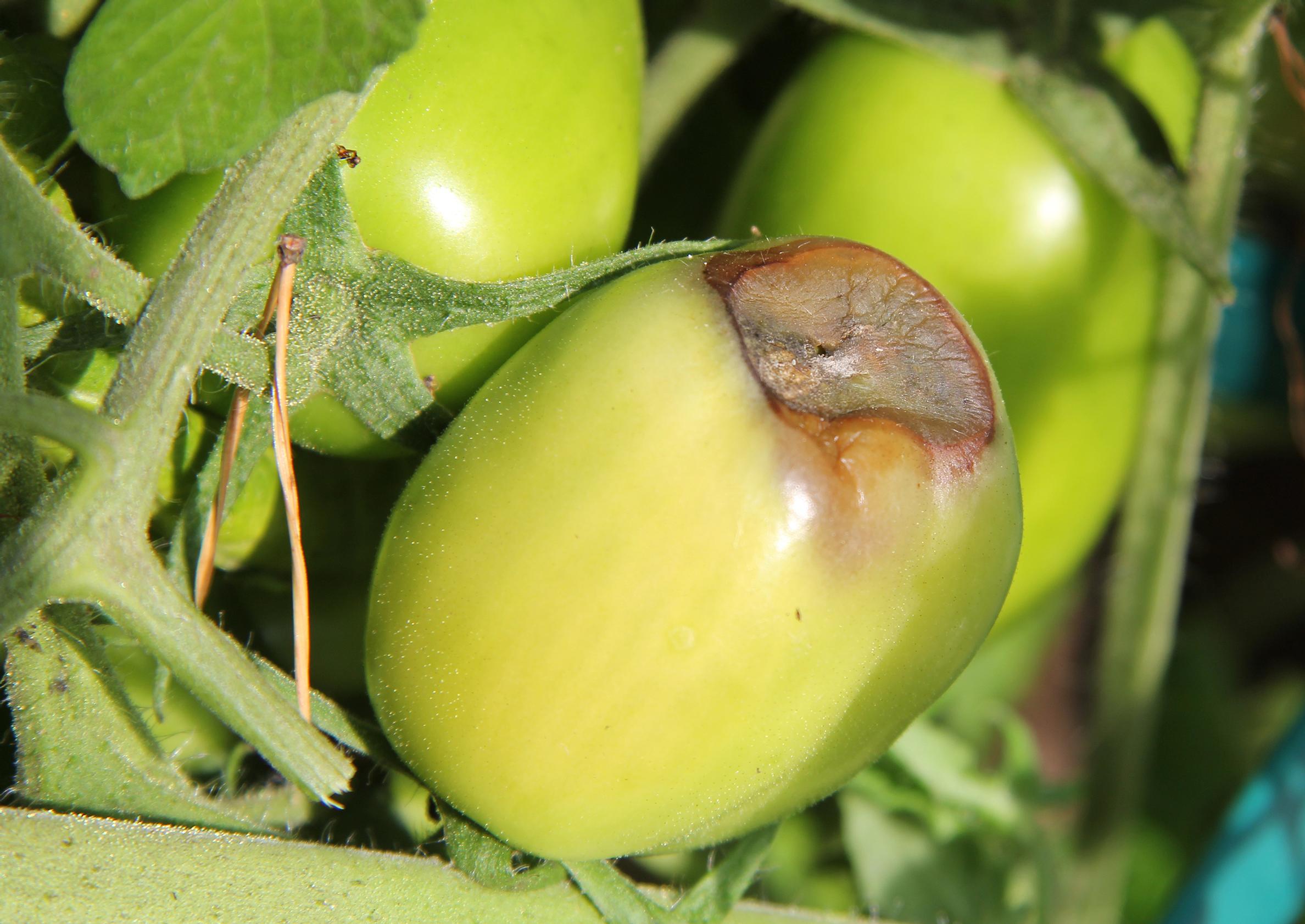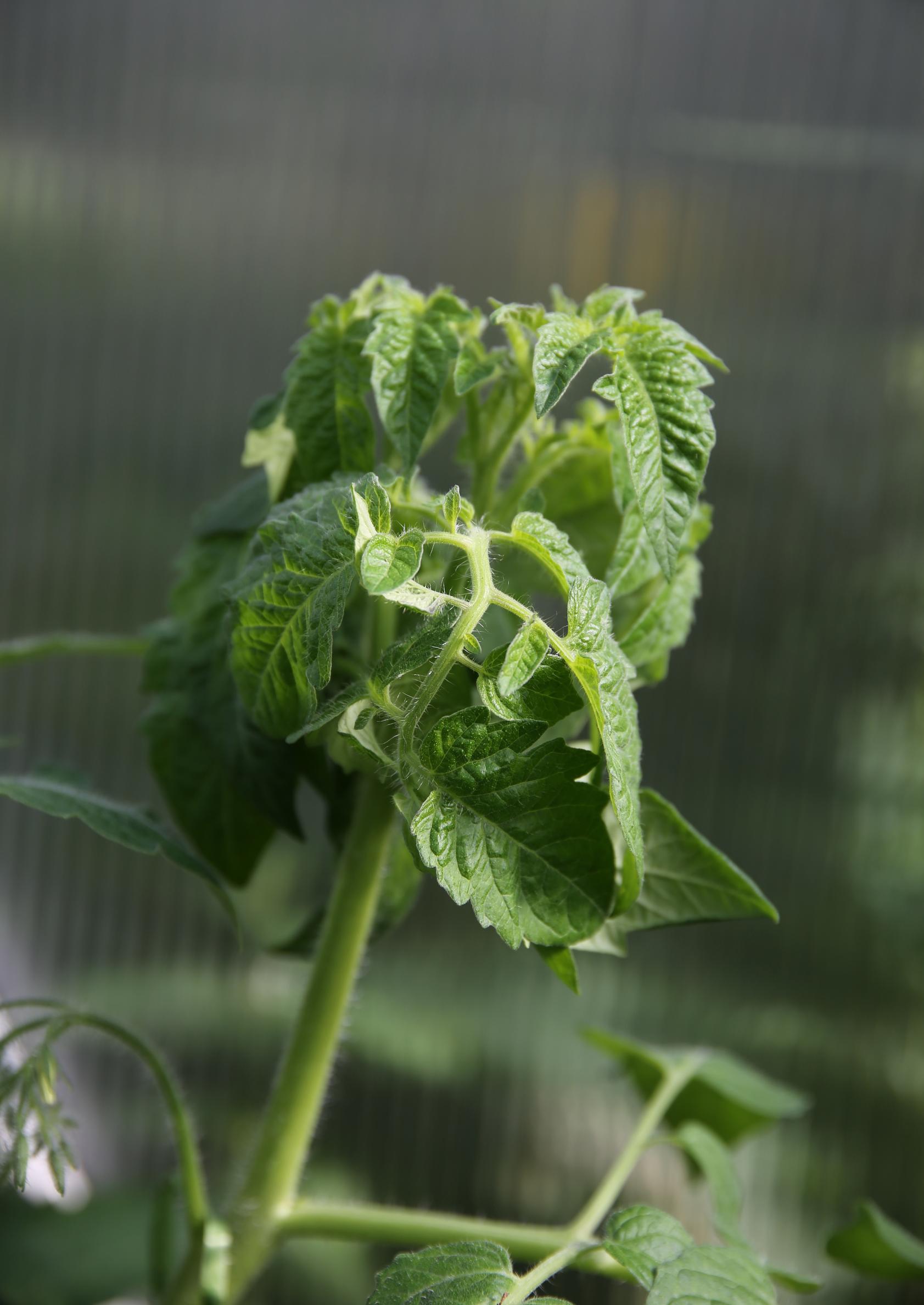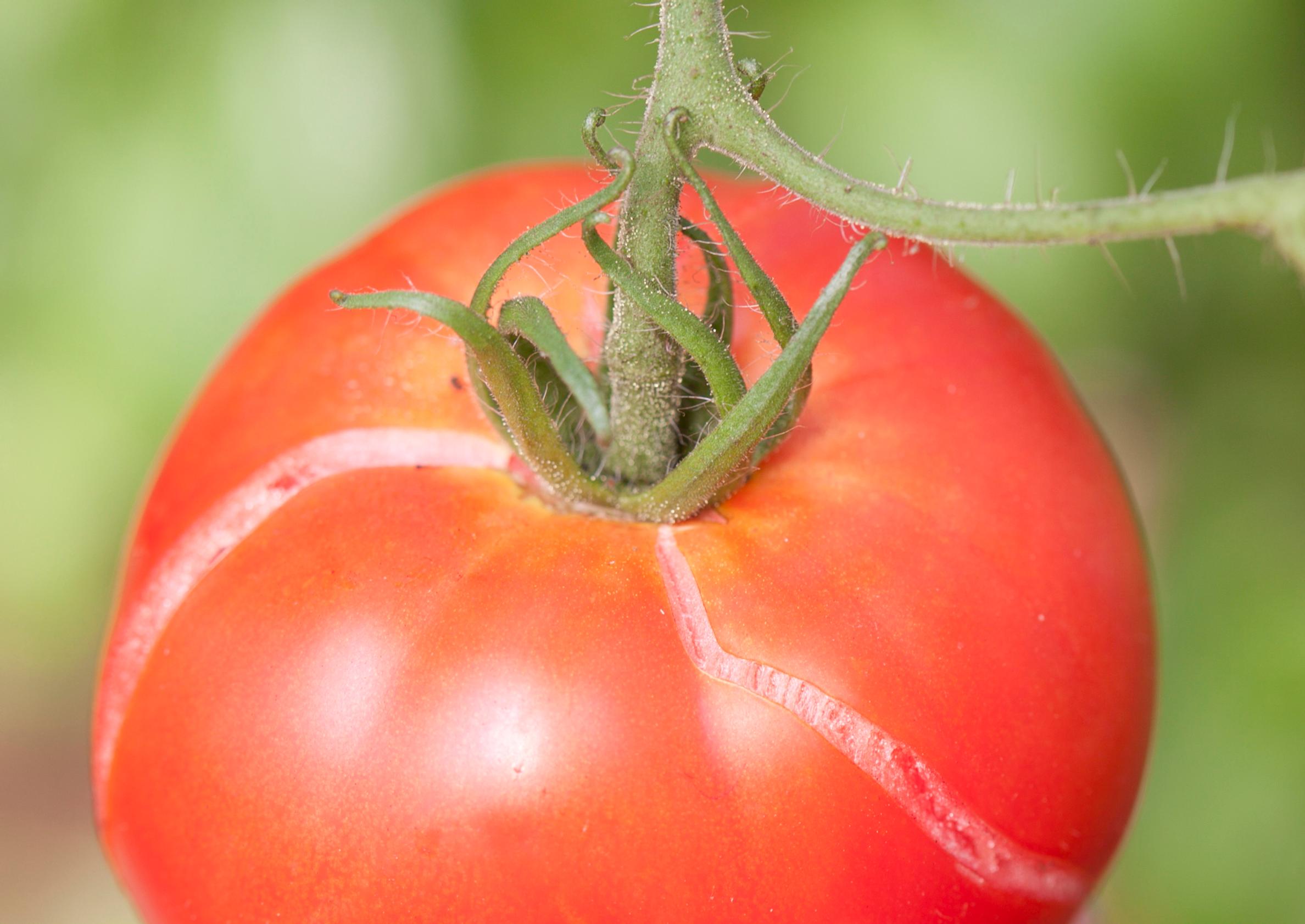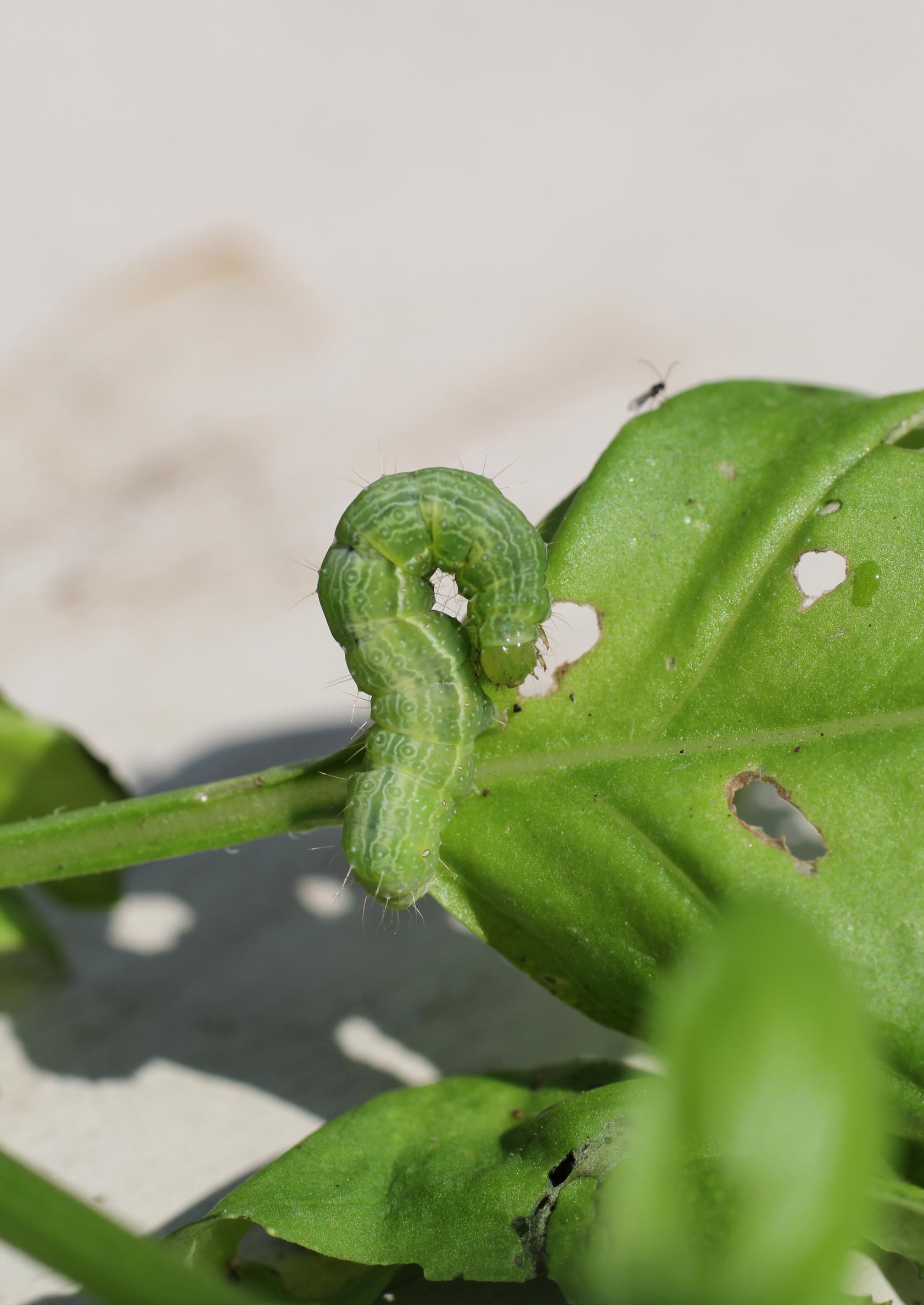
Brown spots or wilted seedlings: what's wrong with my tomatoes?
Tomatoes that turn dark, rot, or split. Pale spots on the leaves. What’s going on with your tomatoes? In this article, we’ve listed the most common tomato diseases and problems.
1. Why do tomato seedlings wilt?
Seedling death is most likely caused by a fungal disease commonly known as damping-off. Plants infected with damping-off develop a darkened stem base, collapse, and die. The pathogens live in both the growing medium and on the surface of the seeds.
A mild, unfertilized, airy, and clean seed-starting mix and clean containers help give seedlings a strong start.
2. Why does a brown spot appear on the ripening fruit?
A brown spot on a tomato can indicate tomato blight (Phytophthora infestans) or tomato blossom-end rot.
With tomato blight, brown spots will also appear on the leaves. Tomato blight is the same disease as potato blight. The infection spreads easily if there’s an infected potato crop nearby. High humidity in the greenhouse also predisposes tomatoes to blight.
Tomato blossom-end rot is caused by irregular watering and a lack of calcium. Its symptoms differ from blight, as the brown spot on the blossom end of the fruit darkens and becomes leathery. Prevent blossom-end rot by watering consistently and ensuring adequate calcium intake.
3. Why are tomatoes turning dark and spoiling?
If tomatoes start turning black at the blossom end, the tomato has blossom-end rot. This can be caused by low calcium levels in the growing medium, excess potassium or magnesium, or high levels of soluble salts. It’s also possible that the soil’s nutrient values are fine, but the plant can’t use the calcium due to poor growing conditions or root problems. Blossom-end rot may also come from very high humidity or a lack of water, both of which reduce transpiration and make it hard for calcium to reach the fruit and new growth. Root function can be weakened by cold growing media, waterlogging, and lack of oxygen.

4. Why do my tomatoes stay green?
Tomatoes might stay unripe due to various reasons, such as the variety in question or excessively high temperatures. The time from flowering to a ripe, edible fruit can take five to nine weeks depending on the variety. Ideally, daytime temperatures should be around 21–24°C and nighttime temperatures around 16–18°C. If temperatures rise above 30°C or drop below 16°C, pigment development stops. Achieving these conditions is often challenging in home greenhouses without automation.
Consistent watering and fertilization help tomatoes thrive and their fruit to mature. For indeterminate varieties, it’s also a good idea to remove the suckers growing in the leaf axils. Removing lower leaves improves air circulation and sunlight exposure for the fruit.
Cutting off the tomato’s growing tip after four or five flower clusters also supports fruit development and ripening. This usually happens by late August.
5. What are the pale, powdery spots on tomato leaves?
This is most likely tomato powdery mildew (Oidium sp.). The first signs are pale green or yellow patches on the upper leaf surface. There may also be plenty of mildew underneath. The infection turns the leaves yellow. Powdery mildew gets a foothold if seedlings are moved into a very humid greenhouse. Professional growers prevent it with proper heat and ventilation so moisture levels don’t become too high. Also make sure the plant is getting enough magnesium, an important component of chlorophyll. A lack of magnesium can cause leaf yellowing.
6. What should I do if the tomato leaves curl despite watering?
Leaf curl in tomatoes isn’t actually a disease. Aphids are one possible cause, and several species inhabit tomato plants. Aphids hide under the leaves, where they can be seen with the naked eye. Mild plant protection products can help.
Leaf curling can also result from suboptimal growth conditions. Dark green, tangled tops indicate lush growth and overly strong fertilization, while curled leaves may suggest large temperature differences between day and night. If tomatoes have thrived in previous years, it’s worth comparing past and current weather and growing temperatures.
The soil may also be at fault. You can reuse the same growing medium for several years by adding nutrients and small amounts of soil or peat, as long as it remains structurally sound and disease-free. Occasionally, more extensive soil work or even replacing the entire medium is recommended.

7. What if the tomatoes crack?
Cracked tomatoes aren’t an actual disease. In the fall, tomatoes may crack when the soil’s salinity drops. You can fix this by using a fertilizer with higher potassium content, which is indicated on the package.
Tomatoes might crack suddenly if the weather shifts quickly from sunny to very cloudy. When humidity rises sharply, the plants can’t transpire enough, and excess fluid builds up in the fruit.
When the growing season ends, pick any green tomatoes left on the plants. Those that are nearly full-sized will continue ripening at about 20°C. Lay them on a flat surface to finish ripening.

8. Why aren’t the tomato seedlings growing, even though they were started over a month ago?
Tomato seedlings typically need six to eight weeks of indoor growth before moving outdoors. The variety and growing conditions affect how much they grow in that time. Once transplanted, the roots need time to settle before new growth takes off again. Regular fertilization, watering, and enough warmth are crucial. The ideal daytime temperature is 20–24°C, with 16–18°C at night. Cool temperatures slow growth—if they drop below 10°C, growth stops and the seedling’s stem can turn woody. Planting seedlings too deep can also slow or halt growth.
9. What creature is nibbling on tomatoes in the greenhouse?
The likely culprit is the caterpillar of the bright-line brown-eye moth. These caterpillars are usually green, sometimes reddish-brown, and can grow to 3–4 centimeters in length. In addition to fruit, they also eat leaves. You might notice pale egg clusters under the leaves.
Shore garden moths overwinter as pupae in the greenhouse. Hand-picking the caterpillars, removing plant debris after harvesting, thoroughly cleaning the greenhouse, and replacing the growing medium if necessary can help control overwintering moths. The bright-line brown-eye moth may also enter the greenhouse from outside.

Experts: Agronomist Pertti Rajala and gardener Teija Heinonen


